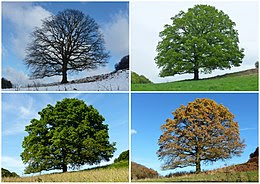why do we have seasons
Just a few components of the globe experience the traditional 4 periods of springtime, summertime, fall and winter season. Numerous components of the globe obtain just 2 or also one. So, what's taking place?
Daily, the Planet rotates when on its axis.
However our world isn't really completely upright when it rotates. Many thanks to a couple of accidents throughout its development, the Planet is slanted at an angle of 23.5 levels.
This implies that as the Planet takes it yearly journey about the Sunlight, various locations of the world deal with the Sunlight much a lot extra straight throughout their daytime hrs at various times of the year.
The turn likewise impacts the everyday quantity of light — without it the entire world would certainly have 12-hour days and evenings daily of the year.
Australia has summertime at completion of the year when the southerly hemisphere is slanted to the Sunlight.
In summertime, days are much longer since much a lot extra hrs are invested dealing with the Sunlight. And they're hotter since we're dealing with the Sunlight much a lot extra head-on — so we obtain strike by much a lot extra rays of sunshine compared to if we got on an angle.
The summertime solstice in Australia — regarding December 22 — is when we have our lengthiest day of the year. On today the Sunlight is as much southern in the skies as it obtains — it passes straight over the Tropic of Capricorn, approximately over Rockhampton. Tips Mendapatkan Jackpot Saat Bermain Judi Slot
However while we're hectic preparation Xmas barbeques, the north hemisphere is slanted far from the Sunlight. That implies there are less daytime hrs up there and the light is spread out out over a higher surface area location, so it does not obtain as cozy. Their quickest day — the winter season solstice — occurs on our lengthiest.
The tables transform 6 months later on, when the Planet is midway about its orbit of the Sunlight. The north hemisphere's summertime solstice (lengthiest day) suits our winter season solstice about June 22, when the Sunlight is as much north as it goes — over the Tropic
In springtime and fall the world isn't really slanted to or far from the Sunlight — it is approximately side-on.
And for 2 days every year the Earth's turn is precisely side-on to the Sunlight. Both days are called equinoxes (equivalent nights), and they autumn in the center of springtime and fall, typically on September 22 and March 22.
On an equinox, evening and day are equivalent size all over in the world.
However springtime and fall just occur in mid-latitude locations of our world. It is a various tale in the tropics and at the icy finishes of the world.



